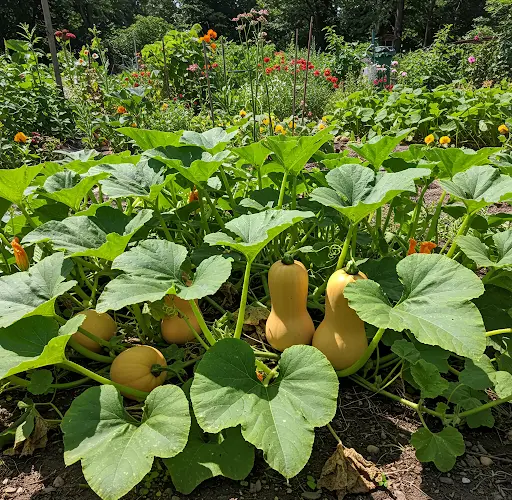How to Grow Butternut Squash at Home for Maximum Yield Without a Garden
Butternut squash is a delicious and nutritious vegetable that can be grown even without a traditional garden. With the right techniques, you can cultivate this vining plant in containers, vertical setups, or small spaces such as balconies, patios, or rooftops. Here’s a detailed guide on how to grow butternut squash at home and ensure a high yield.
Choosing the Right Container
Since butternut squash is a sprawling plant, it requires a spacious container to thrive. Select a container that is at least 18-24 inches in diameter and 12-18 inches deep to provide ample room for root development. Fabric grow bags, large plastic pots, or wooden crates with proper drainage work well.
Selecting the Best Soil and Fertilizer
For optimal growth, butternut squash needs well-draining, nutrient-rich soil. Use a potting mix with a combination of compost, coconut coir, perlite, and garden soil. To boost fertility, mix in organic fertilizers like composted manure, worm castings, or a balanced slow-release fertilizer (e.g., 10-10-10 NPK).
Since you are an expert in organic fertilizers, consider enriching the soil with homemade compost, liquid fish emulsion, or seaweed extract for sustained nutrition.
Choosing the Right Variety
Compact and bush-type varieties of butternut squash are ideal for container gardening. Some recommended varieties include:
- Burpee’s Butterbush (compact, high-yielding)
- Honeynut (small yet productive)
- Waltham (classic variety, requires vertical support)
Planting Butternut Squash Seeds or Seedlings
- If planting from seeds, sow them directly into the container, 1 inch deep, with 2-3 seeds per container.
- Once the seedlings emerge (7-10 days), thin them out, leaving the strongest plant.
- If using seedlings, transplant them carefully into the pot, ensuring they are planted at the same depth as they were in the nursery container.
Providing Proper Sunlight and Temperature
Butternut squash is a warm-season plant that thrives in 6-8 hours of direct sunlight daily. Place the container in a sunny spot, such as a south-facing balcony, patio, or near a window with ample light.
Temperature is crucial for growth. Maintain a range of 70-85°F (21-29°C) during the day and above 50°F (10°C) at night. If growing indoors, consider using grow lights to supplement light exposure.
Watering Requirements
Proper watering is essential for healthy plants and fruit production:
- Water deeply but infrequently, ensuring the soil stays moist but not soggy.
- Water at the base of the plant to avoid fungal diseases.
- Reduce watering once the fruits begin to mature to improve their sweetness.
Using Vertical Support for Higher Yield
Since butternut squash vines can sprawl several feet, vertical gardening techniques help maximize space:
- Use a sturdy trellis, tomato cage, or vertical frame to train vines upward.
- Secure growing fruits with soft slings or mesh bags to support their weight.
- Prune excessive vines to direct the plant’s energy toward fruit production.
Hand Pollination for Increased Fruit Production
Growing butternut squash in a limited space might reduce natural pollination by bees. To ensure fruiting:
- Identify male flowers (thin stems, pollen-producing) and female flowers (small fruit at the base).
- Use a soft brush or cotton swab to transfer pollen from the male flower to the female.
- Repeat early in the morning when flowers are fully open.
Pest and Disease Management
Even in containers, butternut squash can attract pests and diseases:
- Common Pests: Aphids, squash bugs, spider mites. Use neem oil or insecticidal soap as an organic remedy.
- Fungal Issues: Powdery mildew can be controlled by improving air circulation and spraying a diluted milk solution.
- Rot Prevention: Keep fruits elevated and use a mulch layer to prevent soil contact.
Harvesting Butternut Squash
For the best flavor and storage life:
- Harvest when the skin hardens and turns deep beige/tan (typically 80-100 days after planting).
- Use pruning shears to cut the fruit, leaving a 2-inch stem attached to prevent rot.
- Cure the squash in a warm, dry place for 1-2 weeks before storage.
Storing and Using Butternut Squash
- Store in a cool, dry place at 50-60°F (10-15°C) for up to 3-6 months.
- Enjoy roasted, pureed, in soups, or as a healthy addition to meals.
Final Thoughts
Growing butternut squash at home without a garden is completely feasible with proper container selection, soil care, vertical support, and pollination techniques. By following these steps, you can achieve a bountiful harvest even in small spaces and enjoy fresh, homegrown squash year-round!



